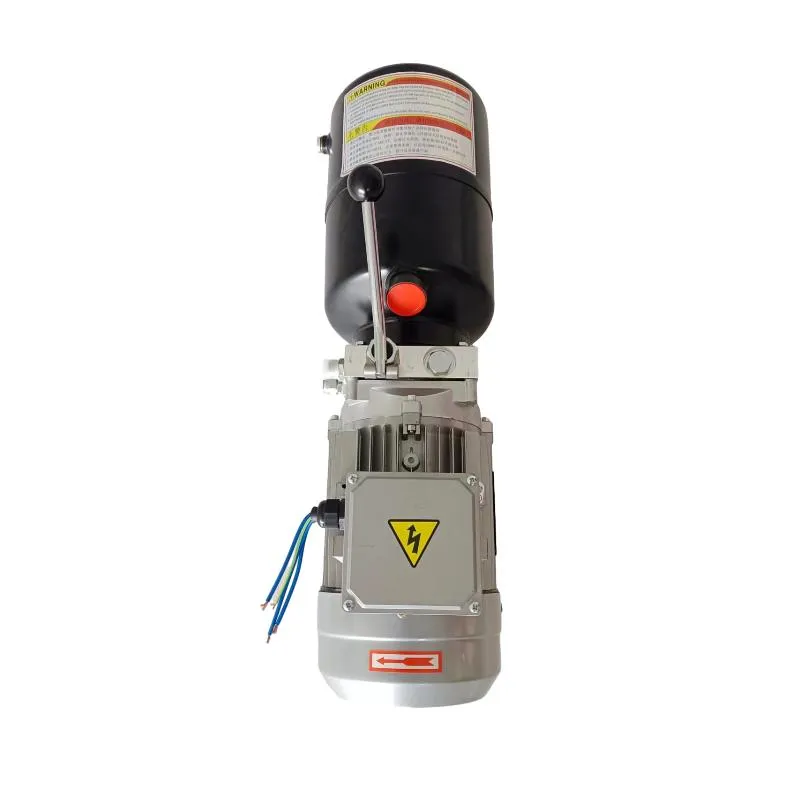Nov . 12, 2024 04:03 Back to list
hydraulic cylinder single acting product
Understanding Single-Acting Hydraulic Cylinders
Hydraulic systems are integral to numerous applications in industrial, agricultural, and construction settings. Among the critical components of these systems are hydraulic cylinders, which convert hydraulic energy into mechanical work. While there are various types of hydraulic cylinders, single-acting hydraulic cylinders play a unique role in many applications. This article will explore the components, functionality, advantages, and typical uses of single-acting hydraulic cylinders, helping you understand their importance in hydraulic machinery.
What is a Single-Acting Hydraulic Cylinder?
A single-acting hydraulic cylinder is a type of actuator that moves in one direction when pressurized fluid is applied to one side of the piston. The return motion is typically achieved through a spring or by the weight of the load itself, making these cylinders simpler in design and operation compared to their double-acting counterparts, which use hydraulic fluid on both sides of the piston for bidirectional movement.
Components of Single-Acting Hydraulic Cylinders
A single-acting hydraulic cylinder consists of several key components
1. Cylinder Barrel The cylindrical main body that houses the piston. 2. Piston Positioned inside the barrel, the piston acts as a separator between the hydraulic fluid and the mechanical load. 3. Rod Attached to the piston, the rod extends out of the barrel and transmits the force produced by the hydraulic fluid to the load. 4. End Caps These are securely fastened to both ends of the cylinder, preventing fluid leakage. 5. Seal and Packing Prevent hydraulic fluid from escaping and contaminants from entering the cylinder, ensuring the efficient function of the hydraulic system.
How Does It Work?
The operation of a single-acting hydraulic cylinder is straightforward. When hydraulic fluid is pumped into the cylinder, it creates pressure on one side of the piston, causing it to move in a specific direction (usually extending the rod). Once the pressure is released, the piston returns to its original position due to the force of gravity, a spring mechanism, or the load's weight. This simple mechanism enables effective control of heavy loads with minimal mechanical complexity.
hydraulic cylinder single acting product

Advantages of Single-Acting Hydraulic Cylinders
Single-acting hydraulic cylinders offer several advantages
1. Simplicity They have a simpler construction, which often translates to lower maintenance and repair costs. 2. Cost-Effectiveness Their design requires fewer components, making them less expensive to manufacture and install. 3. Space Efficiency Due to their design, single-acting cylinders occupy less space compared to double-acting cylinders. 4. Reliability With fewer moving parts, single-acting cylinders are less prone to mechanical failure, increasing their reliability.
Applications of Single-Acting Hydraulic Cylinders
Single-acting hydraulic cylinders are widely used across various sectors
1. Construction Equipment They are prevalent in excavators, backhoes, and other machinery for lifting and holding heavy loads. 2. Automotive Industry Used in operations such as ram assembly and for lifting vehicles for maintenance. 3. Agricultural Machinery Employed in equipment like forklifts and hay balers to lift and position loads efficiently. 4. Manufacturing Commonly found in automated machines for press operations, where they deliver force in a single direction. 5. Material Handling Used for applications requiring straightforward lifting or pushing motions, such as in loading docks and hydraulic presses.
Conclusion
Single-acting hydraulic cylinders play a vital role in providing efficient and reliable movement in various hydraulic applications. Their straightforward design and operational efficiency make them a popular choice in an array of industries. As technology advances, the characteristics and performance of these hydraulic cylinders continue to improve, ensuring they fulfill the ever-increasing demands of modern machinery and equipment. Understanding this component's functionality is crucial for those involved in designing, operating, or maintaining hydraulic systems. Whether you're in construction, automotive, or manufacturing, the significance of single-acting hydraulic cylinders cannot be understated.
-
1.5 Ton Flipping Oil Cylinder 70/82-40-217-720-Hebei Shenghan Hydraulic Machinery|Precision Hydraulic Cylinder,Custom Hydraulic Solutions
NewsAug.29,2025
-
1.5 Ton Flipping Oil Cylinder 70/82-40-217-720 | Hebei Shenghan Hydraulic Machinery Co., Ltd.
NewsAug.29,2025
-
High-Precision [90/105-50-180-480] Industrial Component | Durable & Reliable
NewsAug.27,2025
-
High-Performance Set of 50/60-45-290 471 | Durable & Reliable Components
NewsAug.26,2025
-
Efficient Pallet Truck Power Units - Reliable Hydraulic Systems
NewsAug.25,2025
-
Premium Set of 50/60-45-290 471 Parts | High Performance
NewsAug.24,2025
